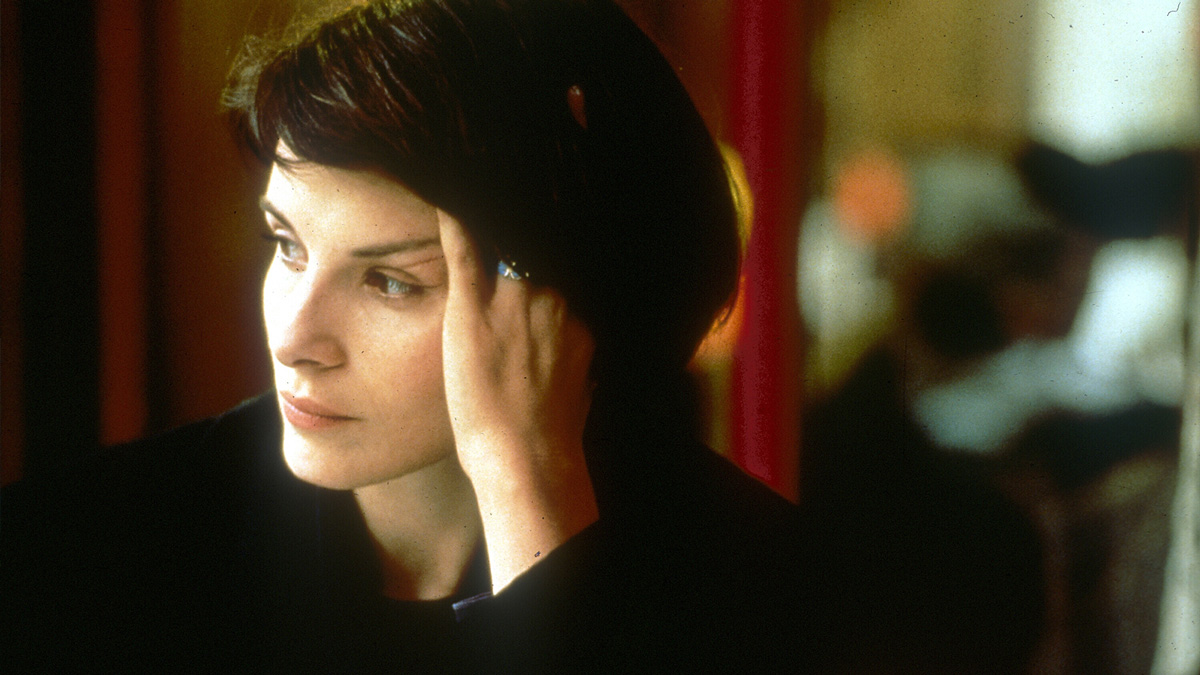
(c) Photofest / Getty Images
“Three Colors: Blue” A love story that comes to fruition as a “music movie”
2021.02.26
“Three Colors: Blue” Synopsis
Julie lost her daughter and husband in a single accident, and was deeply injured herself. After being discharged from the hospital, she disposes not only of her house and furniture, but also of her husband's unfinished sheet music. She leaves for Paris alone and tries to distance herself from her memories, but for a short time she encounters a copy of an unfinished musical score that she thought she had disposed of, and a woman who is pregnant with her late husband's child.
Index
- Blue, white, red -- the first of the "Tricolor Trilogy"
- Krzysztof Kieślowski continued to depict “fate”
- “Blue Love” as a “music movie”
Blue, white, red -- the first of the "Tricolor Trilogy"
"I can't die after all."
Julie (Juliette Binoche), who lost her husband and beloved daughter at the same time in a car accident, suffered serious injuries herself, and attempted suicide by taking a large amount of drugs in her mouth at the hospital in the middle of the night. But then she says these words. “I can’t die after all,” he said.
``The Three Colors: Blue'' (1993), directed by Krzysztof Kieślowski, is the first film in the `` Three Colors: White Trilogy'', which includes ``The Three Colors: Red '' (1994) and ``The Tricolor'' (1994). Thing. As you may know, the ``tricolor'' refers to the French flag, which is made up of three colors: blue, white, and red. Blue symbolizes "freedom," white symbolizes "equality," and red symbolizes "fraternity." In other words, each of Kieślowski's trilogy deals with the themes of "freedom," "equality," and "fraternity."
The film ``Three Colors: Blue'' (hereinafter referred to as ``Blue Love'') won the Golden Lion Award, Best Actress Award, and Best Cinematography Award at the 50th Venice International Film Festival held in 1993. What is being sought is “freedom from the spell of love (rebirth from memory).” The first sentence written at the beginning is the synopsis of this work and also serves as the introduction to the story. Julie's words, ``I can't die after all,'' even though she has experienced an unbearable loss, clearly show that she is someone who aspires to freedom (= rebirth). The story begins from this point.
“Three Colors: Blue” preview
This work is impressive because of the visual information of "blue" that can actually be seen in the play. The film is composed of images based on blue from the opening to the final curtain, and our eyes are drawn to this color from beginning to end, from the pool to some of the stages and accessories.
What comes to mind when seeing the color blue will be different for each audience member. It may be something that makes you think of the vast sky or the ocean, or it may be something that gives you a feeling of ``melancholy,'' such as a ``blue feeling.'' Juliette Binoche's restrained demeanor, as if trying to prevent others from realizing her true feelings, can be interpreted as either of these. Her attitude toward her late husband's infidelity seems to be the former, but it is not necessarily one of "tolerance." The situation is such that a storm could occur at any time. As for the latter, ``melancholy'', it is of course far from ``feeling blue,'' since he is in an immeasurable psychological state due to the sudden loss.

